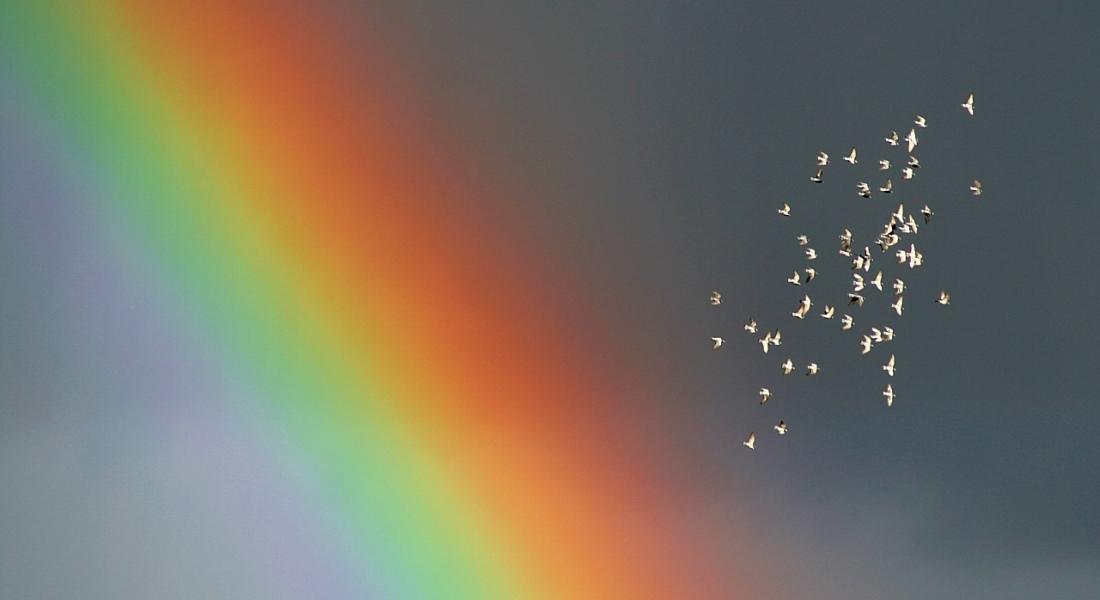
What Leads to a Pot of Gold?
Phil Kesten
If you live in California, or feel a connection to California, you’ve probably been thinking about rain a lot lately. Oh, the happiness of rain! And what is more evocative of rain and happiness together than a rainbow? Let’s wonder a bit about the science of rainbows.
Light changes direction when it passes from one medium to another – we came across this when we explored the science of mirages. By how much, and in which direction, light is bent depends on the speeds at which light travels through the two materials. Here’s an extra wrinkle: the amount of bending also depends, just a bit, on the color of the light.
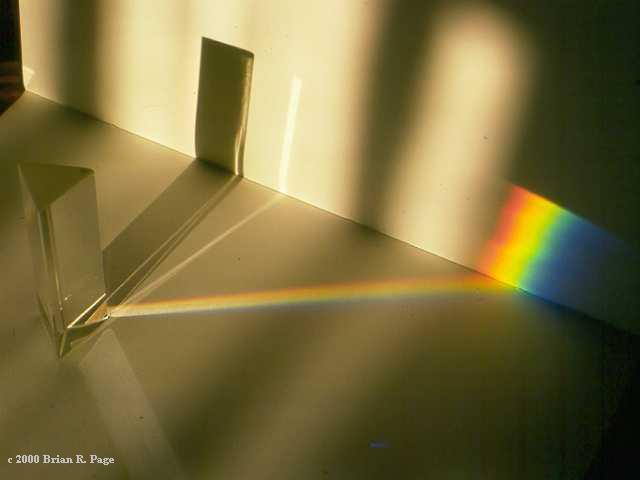
A prism is a piece of glass designed to do exactly this – it spreads out white light into the bands of the color spectrum
Imagine a beam of white light, which is a mixture of all the colors of visible light, passing out of a piece of glass and into the air. Overall, the light is bent so that it comes out closer to the surface of the glass than when it entered the boundary. The different colors also bend at different angles: deep purple colors are bent more (toward the surface) than red colors. For this reason, white light gets separated into bands of different colors.

The inner surface of the water acts like a perfect mirror, reflecting all light that strikes it
You might have learned, once upon a time, to remember the order of the colors as Roy G. Biv – red, orange, yellow, green, blue, indigo, and violet.
A rainbow is certainly the same phenomenon as the spectrum produced by a prism. But what material, up in the sky, is doing the work of the glass?
It is water, in the form of an uncountable number of tiny droplets, which is acting like a prism. Those droplets split the whitish light from the sun into bands of colors.
When light crosses a boundary between water and air, it’s bent toward the surface of the water. At whatever angle (from the surface) that light enters the boundary, the angle at which it leaves is yet even closer. The result is a curious phenomenon: there is a certain angle at which light hits the boundary such that it comes out right along the surface. And for angles larger than that, the light is bent so much that it doesn’t make it out of the water at all. In this case the inner surface of the water acts like a perfect mirror, reflecting all light that strikes it.
Imagine a ray of whitish light from the sun that encounters a spherical rain droplet. In the sequence of snapshots below, it (a) enters the near side of the droplet, (b) is bent slightly as it crosses the air-water boundary, (c) strikes the far side of the droplet and is bent so much that it reflects back into the droplet, and (d) exits the droplet.
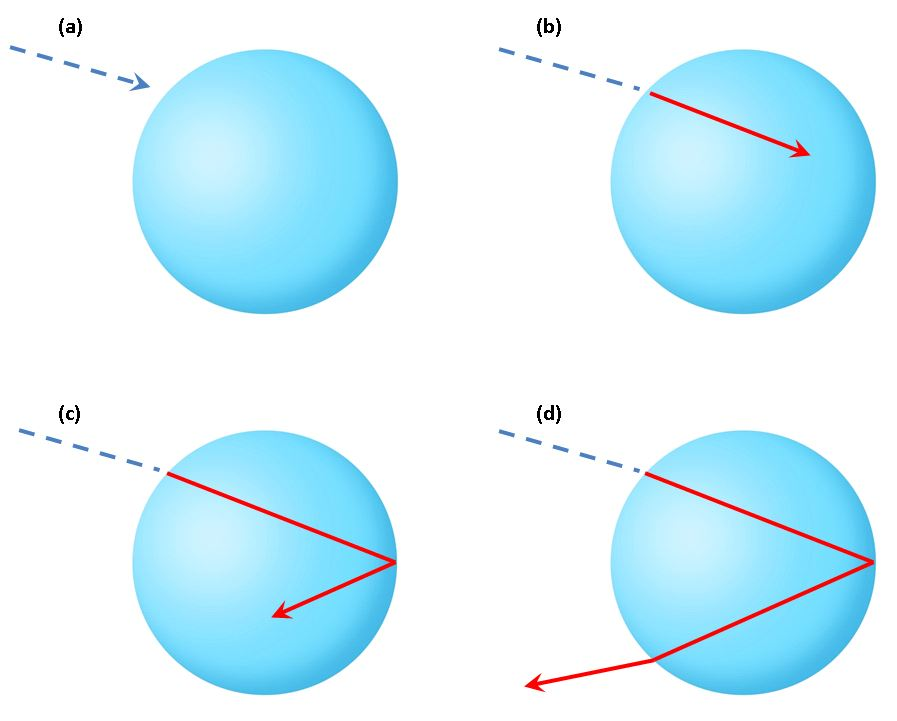
A ray of whitish light from the sun that encounters a spherical rain droplet
These snapshots show just one color of light (red) present in the beam of light. The beauty of the rainbow emerges when we consider all the colors mixed together to make white light. At every boundary, each color is bent a different amount; the red colors are bent the least and violet colors are bent the most. In between red and violet, the farther the light ray’s color is along the Roy G. Biv spectrum, the more it is bent. So a beam of whitish light that encounters a rain droplet is split into bands of colors. A rainbow!
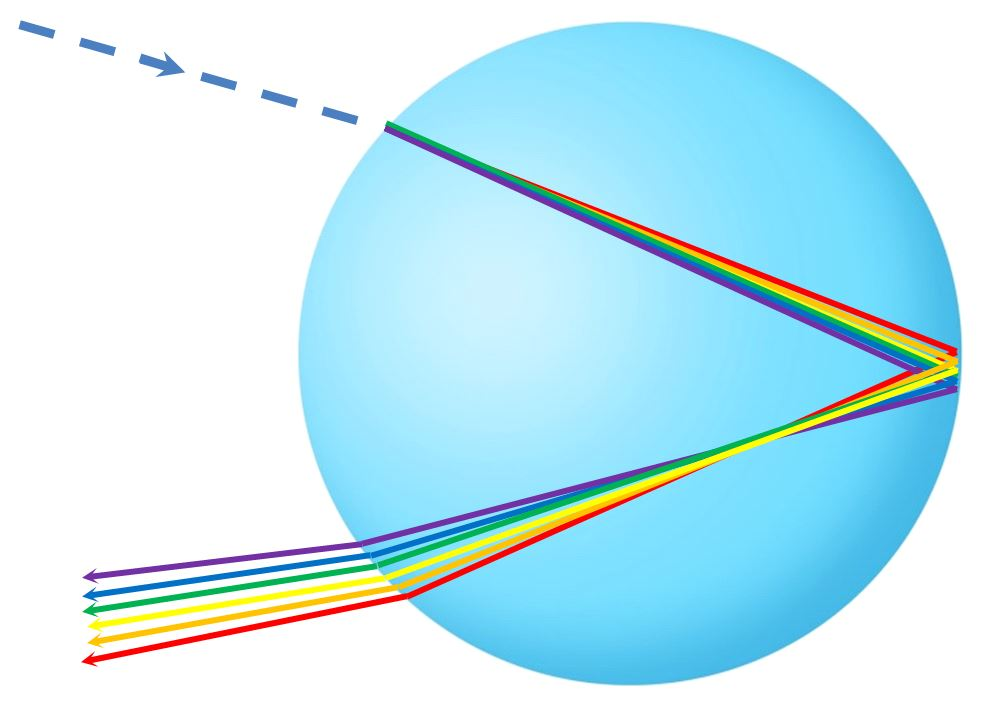
A beam of whitish light that encounters a rain droplet is split into bands of colors - a rainbow!
Notice that sunlight enters the rain droplet from left to right in this sketch, and the rainbow is seen by someone looking from left to right. So where should you look for a rainbow? After a rain shower has passed and the sun is once again shining, look at the sky with the sun at your back. If that part of the sky is still dark with rain … that’s where you’ll find a rainbow!
Every time you see a rainbow, that exact rainbow can only be seen by you. The colors you see are formed as light is bent toward your eyes from a myriad of rain droplets… but only those specific droplets such that the angle between the sun, those rain droplets, and your eyes is exactly right. For someone else, even someone standing next to you, the rain droplets that form the rainbow they see are not the same as the ones that make yours. Yes, every rainbow you see is yours and yours alone!
--------------------------------------------------------
Question to ponder:
You might sometimes see a rainbow that appears to float in between you and a distant mountain. How could that be?
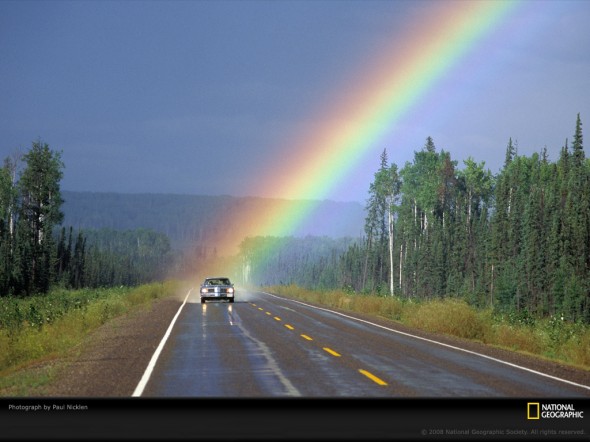
A rainbow that appears to float in between you and a distant mountain
Sometimes, although not frequently, you might see a double rainbow. How does a double rainbow form?
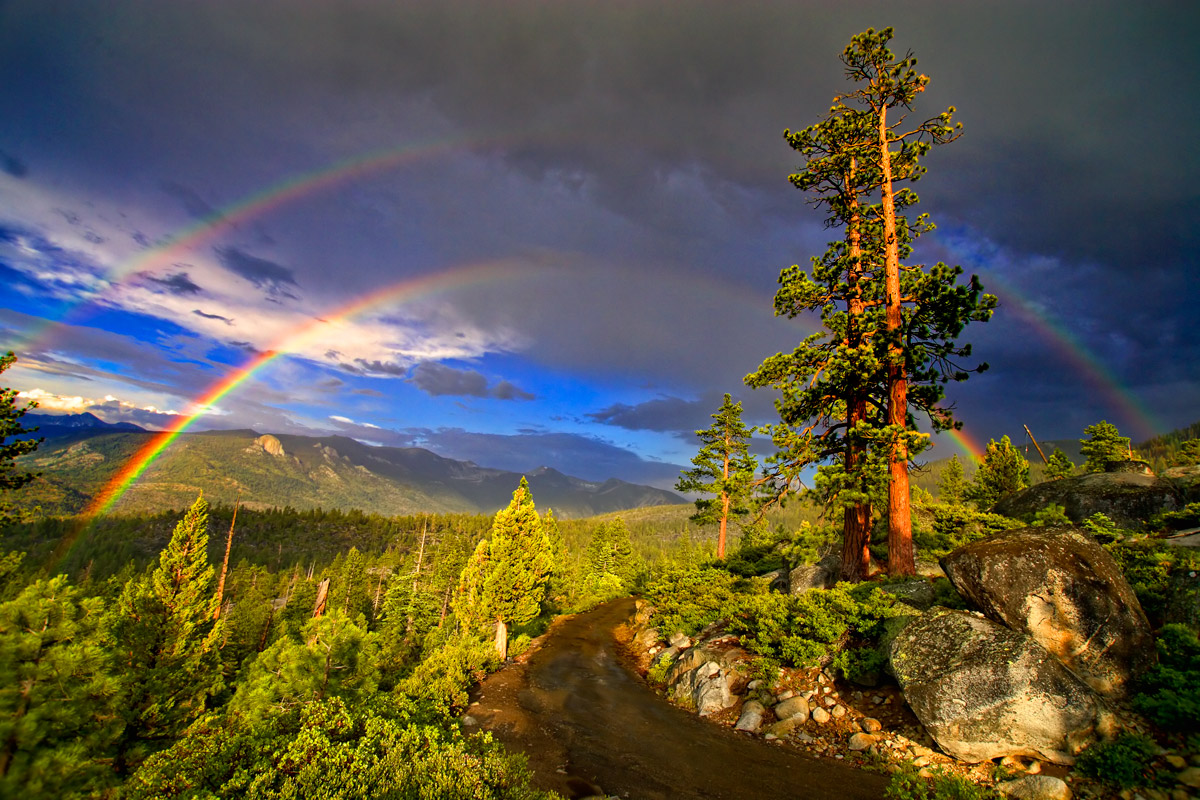
A double rainbow

